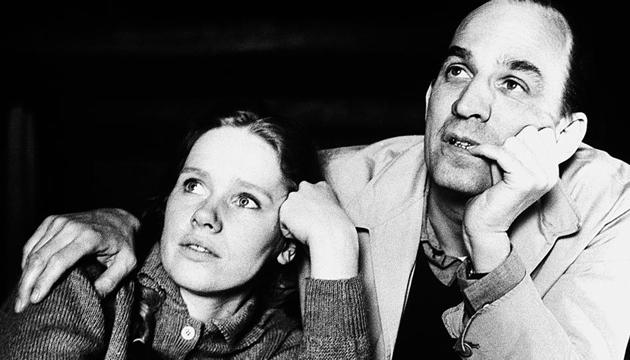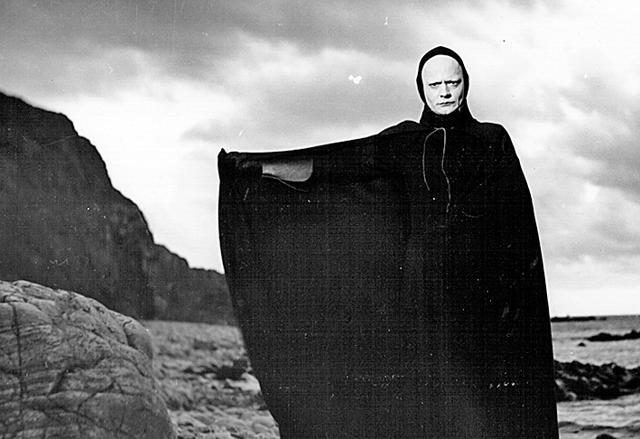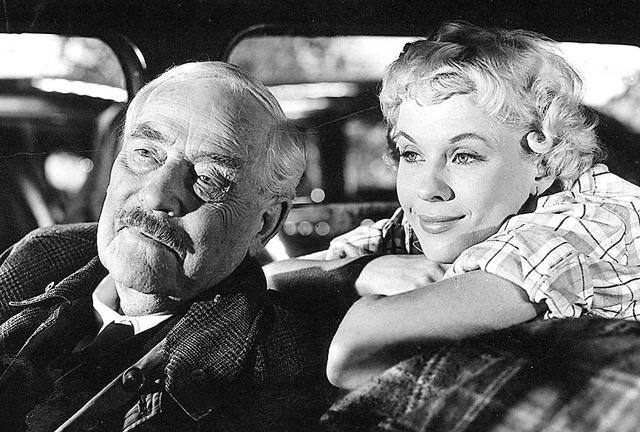A weekend with Ingmar Bergman
Habitat International Festival showcases five Bergman classics. Plus a documentary.
Ernst Ingmar Bergman’s birth in the year 1918 coincided with two significant events: the end of World War I and the ‘birth’ of Lord Krishna. Krishna was born that very year in Dadasaheb Phalke’s silent film, Shree Krishna Janma. More than two decades later, he would come to India in 1947 to make the film A Ship Bound for India. As some of Bergman’s best films are being shown at a film festival in Delhi, there is another Indian connection of his that comes to mind.

In 1964, auteur Satyajit Ray presented him the Selznick Golden Laurel Award for his film Winter Light (1963), which formed part of his ‘Faith Trilogy’ along with Through a Glass Darkly (1961) and Silence (1963), all shot by cinematographer Sven Nykvist who, for the first time, used bounced light in Through a Glass Darkly. [Subrata Mitra, Ray’s cinematographer, had, however, used the technique in Aparajito much earlier in 1956.]
Like Ray and Bergman, Mitra and Nykvist had great respect for each other. Nykvist’s 30-year-old professional relationship with Bergman got him two Oscars.

Just coincidence
Two decades ago, from the ramparts of Hamlet’s Kronborg castle at Helsingør in Denmark, I had seen Malmö, a city in Sweden, imagining Bergman’s presence at its theatre. [In the ’50s, Bergman was appointed artistic director at the Malmö City Theatre]. The bridge connecting Copenhagen and Malmö hadn’t yet been built then in 1998. By then Bergman had already written and staged his Shakespearean tragedy Hamlet in 1986. Bergman’s Hamlet coincided with the making of the Russian master Andrei Tarkovsky’s film The Sacrifice.
One morning while walking down the streets of Stockholm, a local friend had told me a story. Pointing at a building across the road, he said that during making of The Sacrifice, a Swedish production, Tarkovsky had his office there in which Ingmar Bergman also had his. Those days Bergman still lived in Stockholm. The two directors had such great respect and admiration for each other, they carefully avoided each other – perhaps not to disturb each other during work. They never met despite being in the same building; they never met ever!
Truth-teller
The first Bergman film I saw was Wild Strawberries (1957), which our film club screen unit in Mumbai had shown on 16mm on a photophone bulb projector in the early ’80s. Encountering a Bergman in Mulund, a far-off Mumbai suburb, for the first time, was an intense existential experience – in contemplation. Bergman, who had written the screenplay of this film while in hospital, later said that he had tried to tell the truth about the human condition, “the truth as I see it”.
And his quest for finding the ‘truth’ remained rigorous in its austerity. This rigour had moved me deeply while viewing The Silence, more through its sounds than through its images. Its minimalism is remarkable; I still recall one particular scene of a young boy watching through the window an army tank rattling through a street! As a filmosopher, Bergman had the ability to make a meta-statement through an engaging aesthetic sense while retaining the plastic grace of black-and-white cinematography. Just mark the unforgettable beginning of Persona (1966), a montage of images – a scene that seems to be from a silent movie, a close-up of a sheep and shots of people lying still.
Though The Seventh Seal (1957) looks like a medieval morality play in which a knight tries to beat the figure of Death at chess, it has resonances of the despair of the Cold War. It is these resonances, remote or close, that make Bergman’s cinematography contemporary and significant, universal and organic.

The 1978 British-Norwegian co-production Autumn Sonata (shot in Eastman colour) is a supreme example of Bergman’s mastery in choreographing the movements and the gazes of his actors, who formed his personal ‘repertory company’. Ray envied this; he called it the ‘stock company’.
“Because given actors like that, one could do extraordinary things,” Ray had said in an interview. Bergman repeatedly cast the repertory of Swedish actors including Max von Sydow, Bibi Anderson and Gunnar Björnstrand, each of whom appeared in at least five Bergman features. Norwegian actress Liv Ullmann, who appeared in nine of Bergman’s films was the last to join this group – in the film Persona. And as we know, she was most closely associated with Bergman, both artistically and personally.
With the semi-autobiographical Fanny and Alexander (1982) and the recent documentary Bergman Island – which contextualises the film Torment (1944) with which Bergman began his career in cinema as a screenplay writer – the Habitat festival provides a fairly good view of Bergman’s oeuvre. His films are an experience in intensity. He spoke in the language of the soul.
DETAILS
What: 100 years of Ingmar Bergman, Habitat International Festival
Wild Strawberries, March 26, 6:30 pm
Bergman Island, March 27, 7pm)
The Seventh Seal, March 28, 7pm
Autumn Sonata, March 29, 7pm
Persona, March 30, 7pm
Fanny and Alexander, March 31, 6:30 pm
When: Till March 31
Where: Stein auditorium, India Habitat Centre
Nearest metro station: Jorbagh





